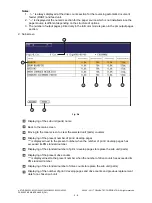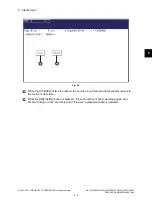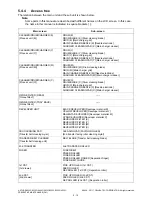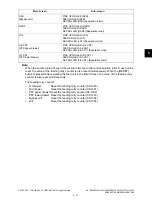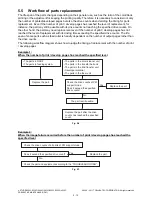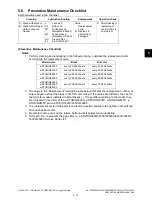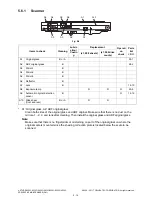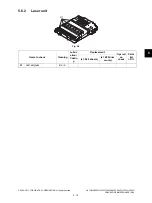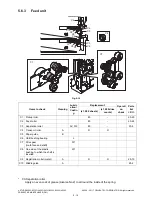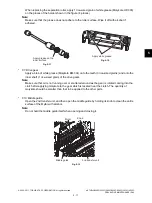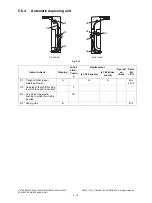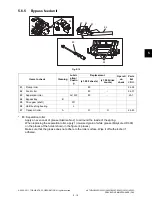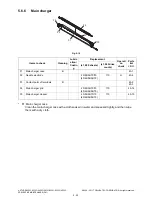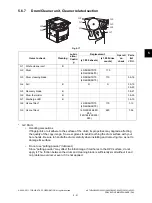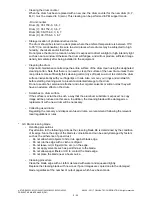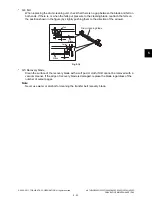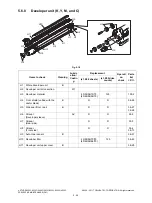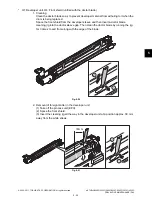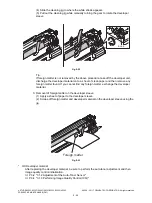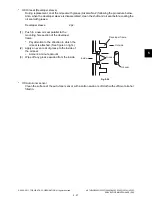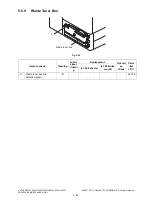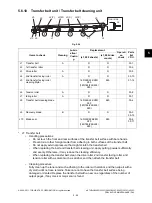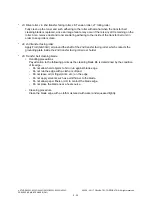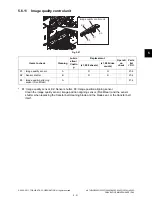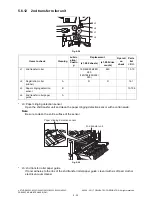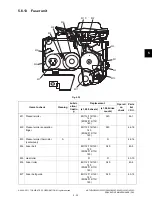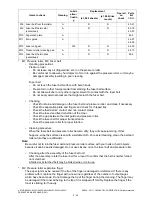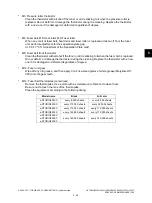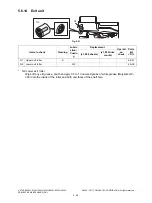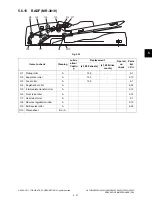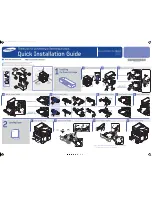
e-STUDIO2020C/2330C/2820C/2830C/3520C/3530C/4520C
© 2008 - 2011 TOSHIBA TEC CORPORATION All rights reserved
PREVENTIVE MAINTENANCE (PM)
5 - 22
•
Clearing the drum counter
When the drum has been replaced with a new one, the drum counter for the new drum (K, Y,
M, C) must be cleared to 0 (zero). This clearing can be performed in PM support mode.
- Drum counter
Drum (K): 08-1150-0, 3, 6, 7
Drum (Y): 08-1152-0, 3, 6, 7
Drum (M): 08-1154-0, 3, 6, 7
Drum (C): 08-1156-0, 3, 6, 7
•
Storage location of photoconductive drums
The drum should be stored in a dark place where the ambient temperature is between 10°C
to 35°C (no condensation). Be sure to avoid places where drums may be subjected to high
humidity, chemicals and/or their fumes.
Do not place the drum in a location where it is exposed to direct sunlight or high intensity light
such as near a window. Otherwise the drum will fatigue, and will not produce sufficient image
density immediately after being installed in the equipment.
•
Cleaning the drum
At periodic maintenance calls, wipe the entire surface of the drum clean using the designated
cleaning cotton. Note that there is no need to clean the surface of the new drum unless there
is a problem. Use sufficiently thick cleaning cotton (dry soft pad) so as not to scratch the drum
surface inadvertently with your fingertips or nails. Also, remove your rings and wristwatch
before starting cleaning work to prevent accidental damage to the drum.
Do not use alcohol, selenium refresher and other organic solvents or silicon oil as they will
have an adverse effect on the drum.
•
Scratches on drum surface
If the surface is scratched in such a way that the aluminum substrate is exposed, no copy
image will be produced on this area. In addition, the cleaning blade will be damaged so
replacement with a new drum will be necessary.
•
Collecting used drums
Regarding the recovery and disposal of used drums, we recommend following the relevant
local regulations or rules.
*
G3: Drum cleaning blade
•
Handling precautions
Pay attention to the following points as the cleaning blade life is determined by the condition
of its edge. Since the edge of the blade is vulnerable and can be easily damaged by factors
such as the adherence of paper dust.
-
Do not allow hard objects to hit or rub against blade edge.
-
Do not rub the edge with a cloth or soft pad.
-
Do not leave oil (or fingerprints, etc.) on the edge.
-
Do not apply solvents such as paint thinner to the blade.
-
Do not allow paper fibers or dirt to contact the blade edge.
-
Do not place the blade near a heat source.
•
Cleaning procedure
Clean the blade edge with a cloth moistened with water and squeezed lightly.
Replace the cleaning blade with new ones if poor images are copied due to the damaged
blade regardless of the number of output pages which have been made

